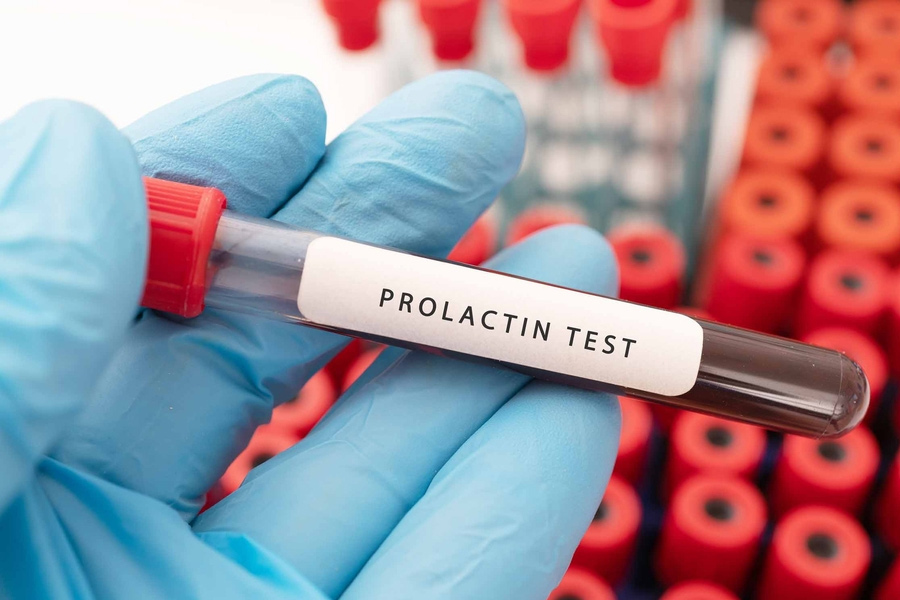
Many health conditions are either overlooked or mistaken for other issues due to their overlapping symptoms. Irregular or absent menstrual periods, for instance, can be seen as a sign of pregnancy, reproductive problems, such as endometriosis or Polycystic Ovary Syndrome (PCOS), or lifestyle factors, such as stress or weight gain. But did you know that changes in menstrual pattern, specifically irregular or absent menstruation, can also indicate high prolactin levels?
Table of Content:-
In this article, we discuss what the condition is and ways it can be identified.
Also Read: Did You Know Breastfeeding Benefits Mothers As Much As Babies? Know From Doctor
What Is High Prolactin Level?

Prolactin is a hormone made by the pituitary gland. Also known as lactotropin, it helps in the production of breastmilk in pregnant and breastfeeding women and also carries out several other functions, including immune system and metabolism regulation.
In an interaction with the OnlyMyHealth team, Dr Mahua Bhattacharya, Consultant Obstetrics and Gynaecology, Fortis Hospital, Anandapur, says, “Standard prolactin levels vary according to different labs, but when the level crosses 50 ng/ml, it is considered hyperprolactinemia, or abnormally high prolactin levels.”
According to StatPearls Publishing, hyperprolactinemia occurs in less than 1% of the general population and in 5–14% of patients presenting with secondary amenorrhoea.
The most common type is a prolactin-secreting tumour, or prolactinoma, which accounts for up to 40% of all clinically recognised pituitary adenomas, benign tumours of the pituitary gland.
The main causes of hyperprolactinemia include:
- Tumour in the pituitary cells, which can be either a microadenoma or a macroadenoma.
- Few medications, such as antipsychotics, antidepressants, and medications used to control high blood pressure
- An underactive thyroid gland or hypothyroidism
- Lactating mothers
- Impaired kidney function can disrupt the clearance of prolactin from the bloodstream, leading to increased levels.
Common Symptoms Of High Prolactin Levels

Sharing some of the common symptoms of high prolactin levels, Dr Bhattacharya lists:
- Abnormal milky discharge from the breasts
- Irregular menstruation
- Visual disturbances, or the inability to have vision for the sides, are called bitemporal hemianopia, along with headaches in the case of macroadenoma.
Furthermore, the condition can contribute to ovarian dysfunction in women and erectile dysfunction, premature ejaculation, low concentration of sperm, and reduced sperm motility in men, Dr Bhavya Saxena, Consultant Pathologist, Global Reference Laboratory, Metropolis Healthcare Limited, tells the OnlyMyHealth team.
She shares that the Gel Filtration Chromatography (GFC) is known to be the gold standard for detecting macroprolactin, but it is time-consuming and a cumbersome method.
Also Read: Hormonal Imbalance: Symptoms, Causes, and Treatment
How To Manage The Condition

Treatment for high prolactin levels depends on the underlying cause.
According to Dr Bhattacharya, if medications are causing it, switching medications might be all that's needed.
For other causes, medication is usually the first approach. Doctors often prescribe drugs called dopamine agonists, which act like a brain chemical to lower prolactin production.
Conclusion
High prolactin levels, or hyperprolactinemia, are not a concerning condition as long as you consult a doctor and receive the required treatment. It can impact several functions in your body, which is why it is important to address it early and on time. Depending on the cause of the condition, the healthcare professional will determine the best course of action for you.
Also watch this video
Read Next
Understanding IVG: New Technology To Combat Reproductive Woes of Infertile and Same-Sex Couples
How we keep this article up to date:
We work with experts and keep a close eye on the latest in health and wellness. Whenever there is a new research or helpful information, we update our articles with accurate and useful advice.
Current Version